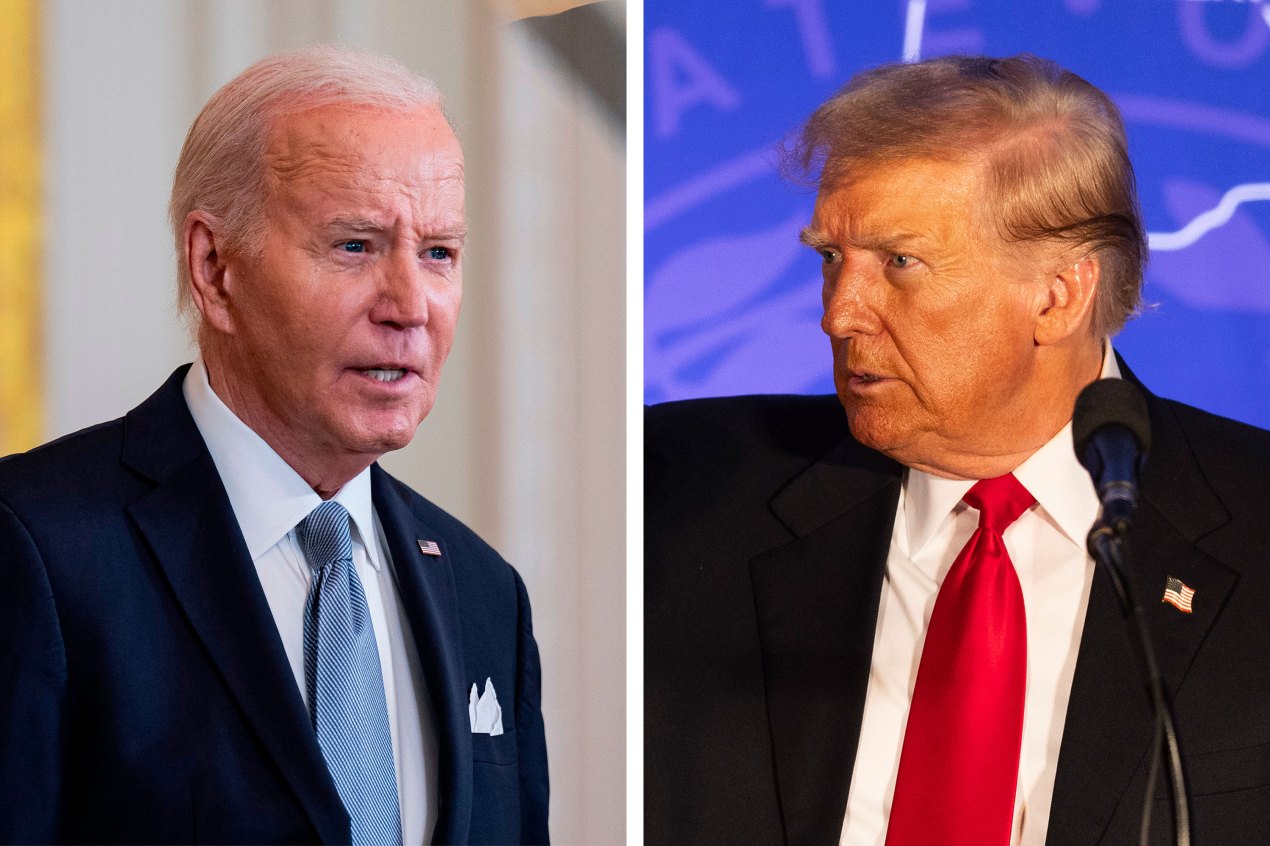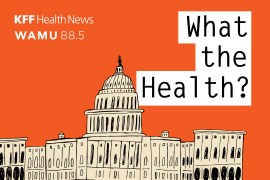When Cassie Cox ended up in the emergency room in January, the Bainbridge, Georgia, resident was grateful for the Obamacare insurance policy she had recently selected for coverage in 2024.
Cox, 40, qualified for an Affordable Care Act marketplace plan with no monthly premium due to her relatively low income. And after she cut her hand severely, the 35 stitches she received in the ER led to an out-of-pocket expense of about $300, she said.
“I can’t imagine what the ER visit would have cost if I was uninsured,” she said.
Cox is among 1.3 million people enrolled in health coverage this year through the ACA marketplace in Georgia, which has seen a 181% increase in enrollment since 2020.
Many people with low incomes have been drawn to plans offering $0 premiums and low out-of-pocket costs, which have become increasingly common because of the enhanced federal subsidies introduced by President Joe Biden.
Southern states have seen the biggest enrollment bump of any region. Ten of the 15 states that more than doubled their marketplace numbers from 2020 to 2024 are in the South, according to a KFF policy brief. And the five states with the largest increases in enrollment — Texas, Mississippi, Georgia, Tennessee, and South Carolina, all in the South — have yet to expand Medicaid under the Affordable Care Act, driving many residents to the premium-free health plans.
But with the federal incentives introduced by the Biden administration set to expire at the end of 2025, and the possibility of a second Donald Trump presidency, the South could be on track to see a significant dip in ACA enrollment, policy analysts say.
“Georgia and the Southern states generally have lower per-capita income and higher uninsured rates,” said Gideon Lukens, a senior fellow and the director of research and data analysis for the Center on Budget and Policy Priorities, a nonpartisan, Washington, D.C.-based research organization. If the enhanced subsidies go away, he said, the South, especially states that haven’t expanded Medicaid, will likely feel a bigger effect than other states. “There’s no other safety net” for many people losing coverage in non-expansion states, Lukens said.
When Cox was enrolling in Obamacare last fall, she qualified for premium tax credits that were added to two major congressional legislative packages: the American Rescue Plan Act in 2021, and the Inflation Reduction Act in 2022. Those incentives — which gave rise to many plans with no premiums and low out-of-pocket costs — have helped power this year’s record Obamacare enrollment of 21 million. The extra subsidies were added to the already existing subsidies for marketplace coverage.
The states that didn’t expand Medicaid and have high uninsured rates “got most of the free plans,” said Cynthia Cox, a KFF vice president who directs the health policy nonprofit’s program on the ACA. Zero-premium plans existed before the new subsidies, she added, but they generally came with high deductibles that potentially would lead to higher costs for consumers.
A Trump presidency could jeopardize those extra subsidies. Brian Blase, a former Trump administration official who advised him on health care policy, said that eliminating the extra subsidies would bring the marketplace back to the ACA’s original intent.
“It’s not sustainable or wise to have fully taxpayer-subsidized coverage,” said Blase, who is now president of the Paragon Health Institute, a health policy research firm. People would still qualify for discounts, he said, but they wouldn’t be as generous.
Karoline Leavitt, a spokesperson for Trump, did not answer a reporter’s questions on the future of the enhanced subsidies under a new Trump administration. Despite his comments at the end of last year that he is “seriously looking at alternatives” to Obamacare, Leavitt said Trump is not campaigning to terminate the Affordable Care Act.
“He is running to make health care actually affordable, in addition to bringing down inflation, cutting taxes, and reducing regulations to put more money back in the pockets of all Americans,” she said.
While views on Obamacare may be divided, the wide support for subsidies crosses political lines, according to a KFF Health Tracking Poll released in May.
About 7 in 10 voters support the extension of enhanced federal financial assistance for people who purchase ACA marketplace coverage, the poll found. That support included 90% of Democrats, 73% of independents, and 57% of Republicans surveyed.
The enhanced assistance also allowed many people with incomes higher than 400% of the poverty level, or $58,320 for an individual in 2023, to get tax credits for coverage for the first time.
Besides the financial incentives, other reasons cited for the explosion in ACA enrollment include the end of continuous Medicaid coverage protections related to the covid public health emergency. About a year ago, states started redetermining eligibility, known as the “unwinding.”
Roughly one-quarter of those who lost Medicaid coverage moved to the ACA marketplace, said Edwin Park, a research professor at the Georgetown University Center for Children and Families.
In Georgia, Republican political leaders haven’t talked much about the effect of the Biden administration’s premium incentives on enrollment increases.
Instead, Georgia Gov. Brian Kemp, among others, has touted the performance of Georgia Access, an online portal that links consumers directly to the ACA marketplace’s website or to an agent or broker. That agent link can create a more personal connection, said Bryce Rawson, a spokesperson for the state’s insurance department, which runs the portal. Employees from the agency and from consulting firms helped market the no-premium plans throughout the state, he said.
Yet Georgia Access didn’t become fully operational until last fall, during open enrollment for the marketplace. Republicans also credit a reinsurance waiver that, according to Rawson, increased the number of health insurers offering marketplace coverage in the state, leading to more competition.
Reinsurance is likely not a major reason for a state’s increased Obamacare enrollment, said Georgetown’s Park. And a study published in Health Affairs found that Georgia’s reinsurance program had the unintended consequences of increasing the minimum cost of subsidized ACA coverage and reducing enrollment among individuals at a certain income level, the Atlanta Journal-Constitution recently reported.
The state’s insurance department said the study “does not accurately reflect the overall benefits the reinsurance program has brought to Georgia consumers.”
When asked whether the governor would support renewal of the enhanced subsidies, Garrison Douglas, Kemp’s spokesperson, said the matter is up to Congress to decide.
Another reason for the soaring ACA enrollment is the 2023 fix to the “family glitch” that had prevented dependents of workers who were offered unaffordable family coverage by employers from getting marketplace subsidies.
States that have run their own marketplaces, though, generally have not seen the same level of enrollment increases. Those 18 states, plus the District of Columbia, have expanded Medicaid. Georgia will join the list of states running their own exchanges this fall, making it the only state to operate one that has not expanded Medicaid.
The federal Centers for Medicare & Medicaid Services credits a national marketing campaign and more federal funding for navigators, the insurance counselors who provide education about marketplace health coverage and free help with enrollment.
That level of financial support for navigators may be in jeopardy if Trump returns to the White House.
The Biden administration injected nearly $100 million in funding for navigators in the enrollment period for coverage this year. The Trump administration, on the other hand, awarded just $10 million a year for navigators from 2018 to 2020.
The marketplace is usually “a transitional place” for people coming in and out of coverage, KFF’s Cox said. “That marketing and outreach is pretty essential to help people literally navigate the process.”







